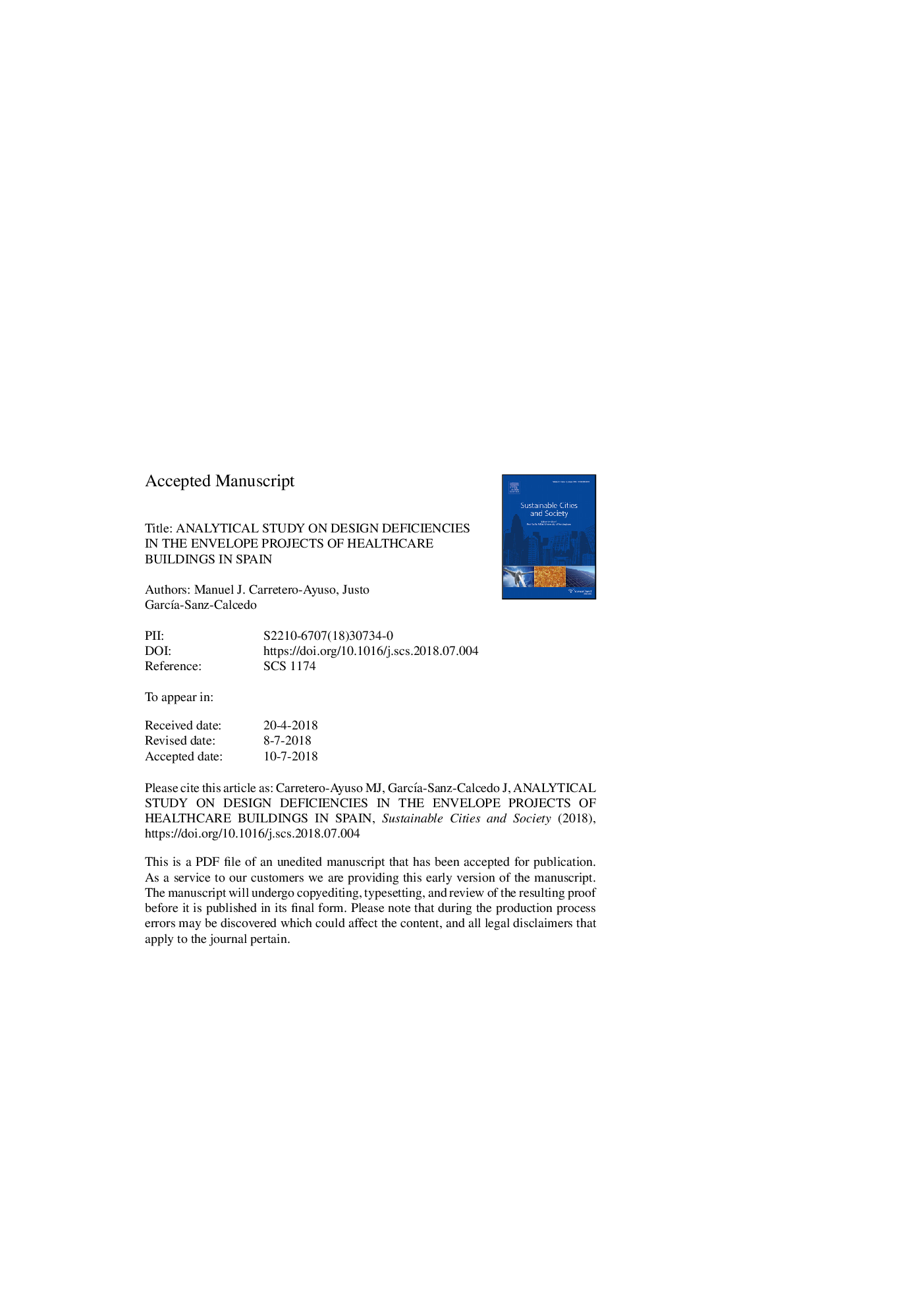| Article ID | Journal | Published Year | Pages | File Type |
|---|---|---|---|---|
| 6774831 | Sustainable Cities and Society | 2018 | 24 Pages |
Abstract
The deficiencies in the design of a building influence its environmental sustainability. In this paper we examine the design failures which are common in the envelope of healthcare centres of Extremadura, Spain, by analysing a homogeneous sample of 17 projects of public healthcare centres sized between 350âm2 and 3500âm2. All healthcare centres' envelopes were comprised of brick facades and flat roofs. A total of 344 incidences were found in the sample, related to 51 control parameters. The average number of incidences per project was of 14. It was noted that 29% of the projects reviewed were of high quality, 53% of intermediate quality and 18% of poor quality. A significant amount of the detected failures had to do with the 'omission' of data (39%) or with the lack of 'definition' in the stipulations (25%). It has been demonstrated that larger and costlier healthcare centre projects usually have higher quality designs with fewer critical errors, independently of their geographical location and construction year. This research allows to identify the projects' aspects which can lead to errors in the envelope during the healthcare centres' service life. Furthermore, a tool has been developed to minimise failures in the design stage, preventing their later appearance.
Related Topics
Physical Sciences and Engineering
Energy
Renewable Energy, Sustainability and the Environment
Authors
Manuel J. Carretero-Ayuso, Justo GarcÃa-Sanz-Calcedo,
